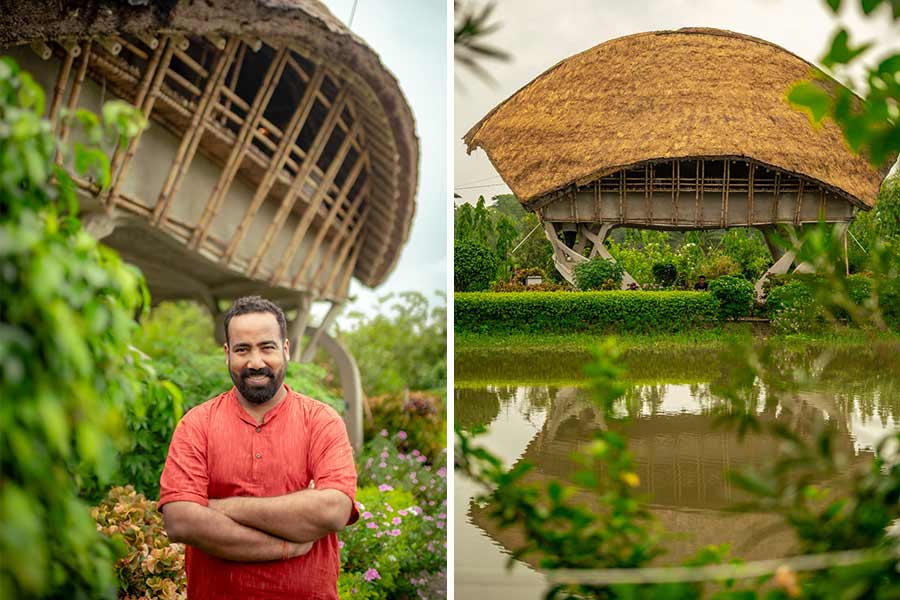When cyclone Amphan ravaged the Sunderbans in 2020, it left behind debris of destroyed houses, and a pertinent question — how to build homes that can withstand such calamities in the future?
The answer was rooted in local craftsmanship and naturally available materials. But how to use them effectively to build cyclone-resistant structures was where Kolkata-based architect Udit Mittal came into the picture.
A graduate of the School of Planning and Architecture, New Delhi, Mittal had spent his student years travelling across India. From documenting the Baolis of Bundi to exploring remote settlements in Spiti, his work took him to Pondicherry, Bhubaneswar and Kerala, before finally bringing him to Purba Sridharpur, a nondescript hamlet in the Sunderbans.
“Design doesn’t exist in isolation. Travel taught me how to observe materials, spaces, and people,” he said.
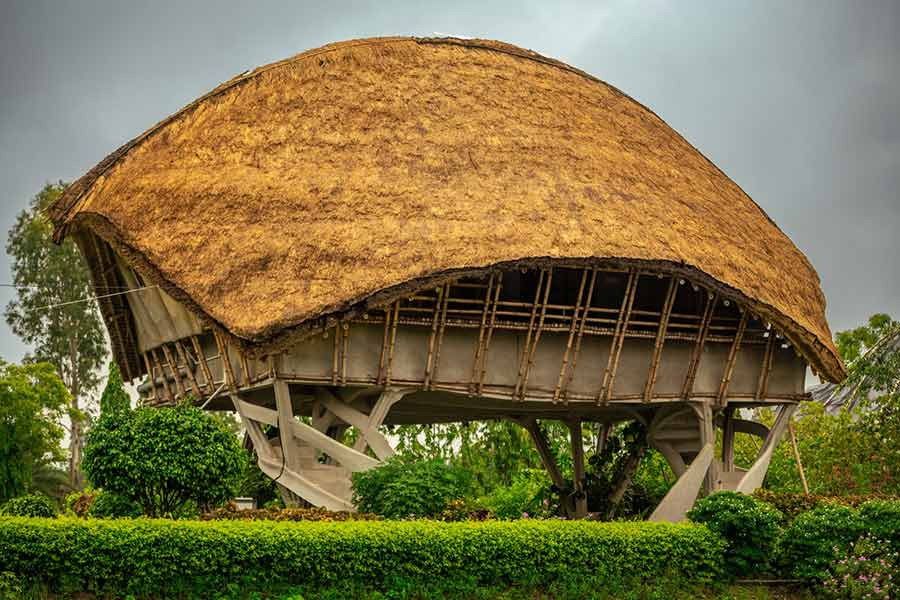
In the aftermath of Amphan, Mittal joined a consortium, where he met French architect Laurent Fournier. Together, they worked closely with Mukti, a Sunderbans-based NGO, to construct prototypes of cyclone-resistant homes using locally sourced brick, bamboo, mud and thatch.
“We didn’t want to import solutions. The idea was to build using what the land and people already know,” Mittal said.
A turning point came when Mittal was asked to design a guest house for donors visiting the Mukti campus in the Sunderbans. He proposed a structure that would not only house guests but also function as a model for cyclone-resistant architecture.
Built entirely with local techniques and materials, the guest house — with its elevated floor slab, bamboo thatch roof, and aerodynamic form — doubled up as a shelter during storms. Its success built trust among the villagers, and soon the idea of replicating the design in homes across the region began to take shape.
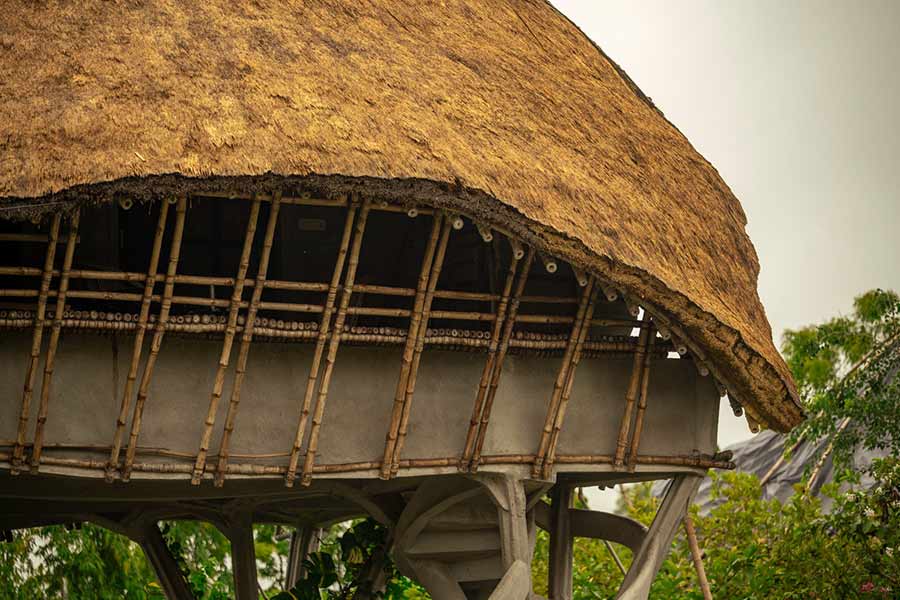
One of the key innovations was the use of shallow brick domes for floor slabs, raised on pyramidal reinforced cement concrete foundations designed to mimic the strong roots of mangrove trees. These structures sit on stilts, keeping habitable areas above flood levels — it is a crucial feature in a region where tidal surges can be as dangerous as high winds.
“Cyclones don’t just bring wind, they bring water. Elevating the structure was not optional, it was essential,” explained Mittal, the principal architect for the project.
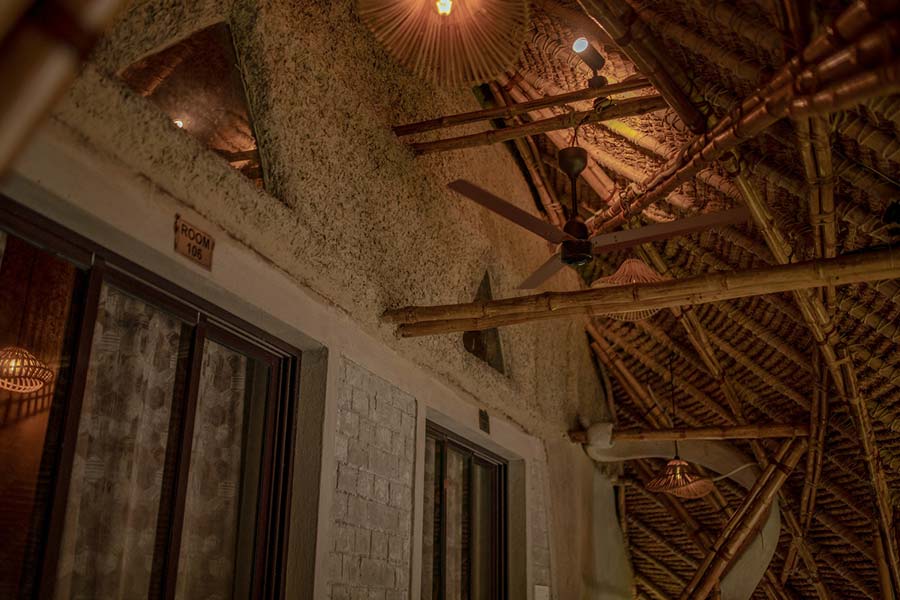
Another standout feature is the use of bamboo that is treated and sourced locally and used for everything, from roofing to internal supports.
The do-chala form of the roof borrows from traditional Bengal architecture but is scaled up and engineered to withstand winds up to 180 km/hr. The thatch covering, made from a native variety of rice straw, offers natural insulation and requires no waterproofing.
“Yet, it has survived continuous rains through four cyclones, including Sitrang, Mocha, Remal and Dana. It’s warm, breathable and textured — both beautiful and functional,” Mittal said.
These building techniques are already being adopted by villagers. Over 50 homes have been constructed using similar principles, said Mittal. They use bamboo and mud walls, elevated shallow dome slabs, and pre-assembled thatch panels.
“The moment they saw the benefits like the affordability, thermal comfort, and safety, they began adapting the methods in their own way,” said Mittal.
Mukti has supported the effort by setting up training programmes and facilitating access to materials.
"It is a difficult life for the people of Sunderbans. Besides the peril of tigers and crocodiles, we battle cyclones and floods every year. The cyclone-resistant centres give us the hope to battle the upcoming cyclones better," said Babitosh Paik, a local farmer.
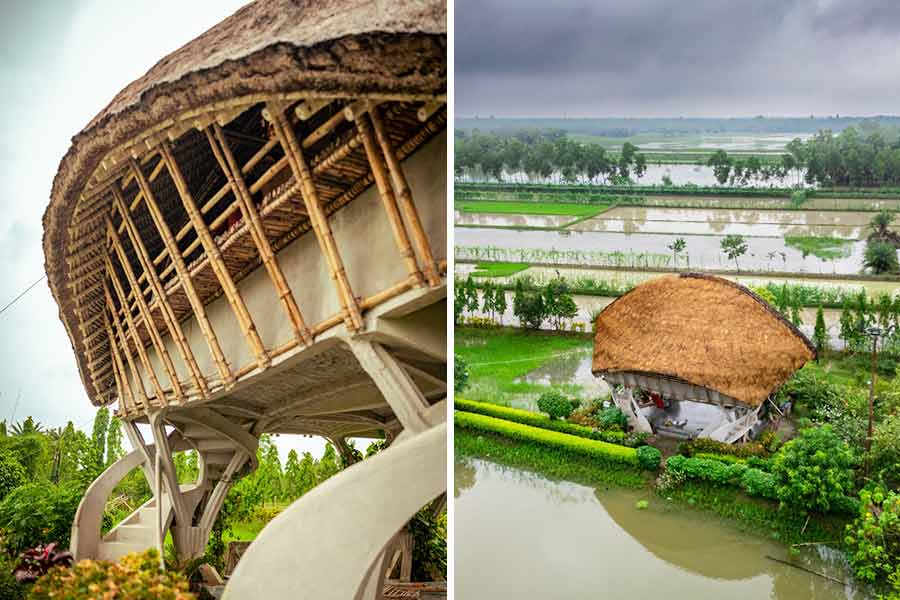
The spirit behind these homes lies not just in their strength, but in their flexibility and accessibility.
“We didn’t want a design that looks out of place. We wanted to create something that villagers could build, repair, and replicate on their own,” Mittal said.
Even a structure built for elite donors, a guest house on the Mukti campus, follows the same principles and now serves the community as a cyclone shelter and multipurpose space.
As work continues on a new four-room structure built almost entirely out of bamboo, Mittal reflects on what the project has come to mean. “It’s no longer about just making buildings. It’s about sharing knowledge, building trust, and preparing a whole region to face what’s coming — together.”
